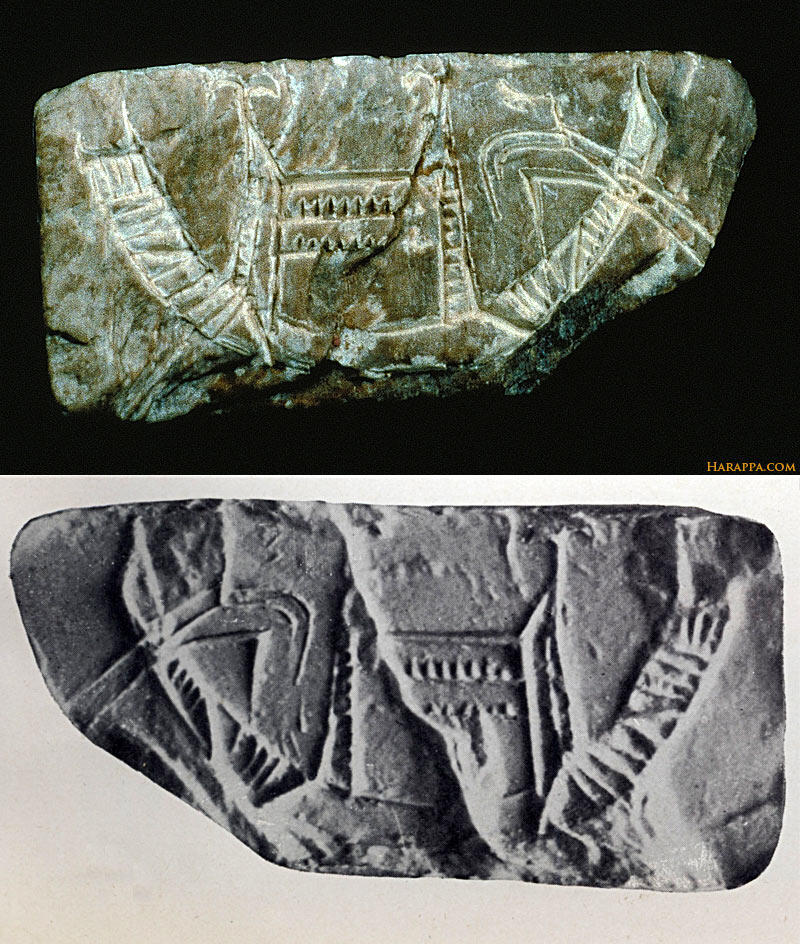February 17th, 2015
An unfired steatite seal and sealing of a boat found at Mohenjo-daro. A close and insightful reading by Ernest J.H. Mackay reads "Seal 30 ... was found in two pieces. It is rectangular in shape and incomplete motif on the back consists of roughly scratched lines that cross one another... The face is nearly complete and it clearly bears a representation of a ship, the first of its kind to be found one a seal from Mohenjo-daro... Why representations of boats and ships are so rare it is difficult to explain, as it is more than probable that the river Indus was largely used for traffic of all kinds, and river craft should have been perfectly familiar to the inhabitants of Mohenjo-daro.
The vessel portrayed on this seal is boldly but roughly cut, apparently with a triangular burin, and is apparently not the work of an experienced seal cutter; hence its interest, because, probably as a consequence of inexperience, the motif is not a stereotypical one. The boat has a sharply upturned prow and stern, a feature which is present in nearly all archaic representations of boats; for example, the same boat appears in early Minoan seals, on the Predynastic pottery of Egypt, and on the cylinder seals of Sumer. In the last mentioned country, this type of boat was used down to Assyrian times. On the ivory knife-handle of Gebel-el-'Arak in the Louvre are depicted ships which bear a very close resemblance to the one on our seal; these and the other scenes on this handle are, indeed, explained by Petrie as not Egyptian, but the product of an Oriental people inspired by Elam and the Tigris region.
It will be noticed that this boat is shown as lashed together at both bow and stern, indicating perhaps that it was made of reeds like the primitive boats of Egypt and the craft that were used in the swamps of southern Babylonia. The hut or shrine in its center also appears to be made of reeds and fastened at each end of it is a standard bearing an emblem comparable, though not in actual shape, with the ensigns on the Gebel-el-'Ark handle. At one end of the boat on the seal from Mohenjo-daro a steersman whose head is unfortunately missing is seated at a rudder or steering-oar. The seal-cutter here was not at all sure of his figure and placed it well above the seal.
The absence of a mast suggests that this boat was used only for river work, as are some of the wooden boats on the Indus at the present day; though the modern boats have a less acutely upturned prow and stern, they usually have a similar cabin-like erection in the middle, sometimes constructed of wood and sometimes of reeds. The boats of today are chiefly used for fishing and are either rowed or punted against the stream.
This seal is invaluable in indicating a type of vessel that was in use in ancient Sindh. Its owner was perhaps connected with shipping of some kind for in in engraving it most careful attention had been paid to detail. (E.J.H. Mackay, Further Excavations at Mohenjo-daro, 1938, p. 340-1).
See also the Indus Style Boat.

